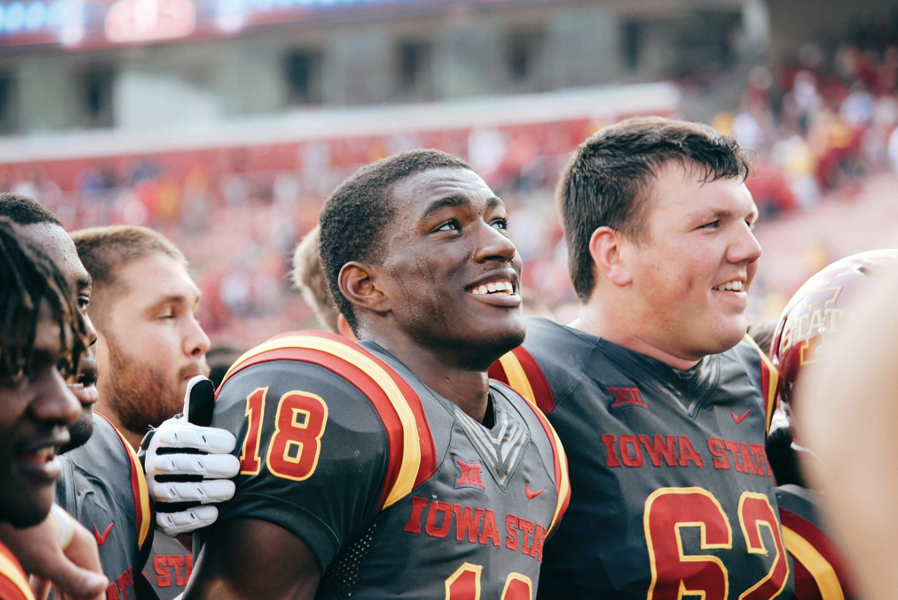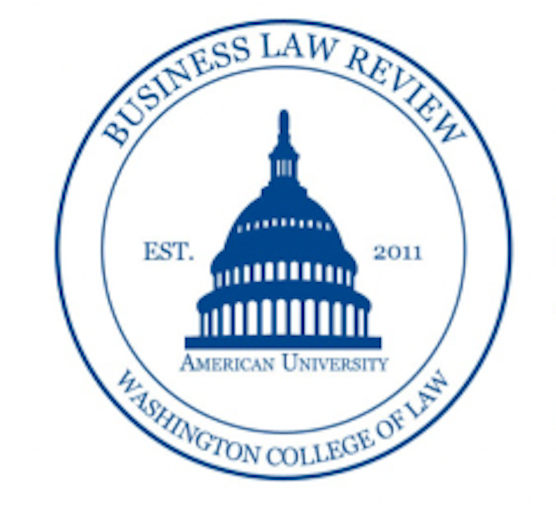
By: Liz Moriyama
After a decade-long hiatus, Electronic Arts (“E.A.”) has revived its wildly popular College Football video game series.[1] In less than a week, the new title sold over 2.2 million copies and netted over two hundred million dollars in revenue.[2] It has since become the best-selling video game of the year.[3] The long drought and triumphant return of College Football video game series was the result of a years-long multimillion-dollar legal dispute over the in-game use of players’ name, image, and likenesses (“NIL”).[4]
The new game, E.A. Sports College Football 25, features a roster of over 11,000 real-life players from 134 different teams.[5] Every participating player, “whether Heisman Trophy favorite or third-string guard[,]” received $600 and a deluxe edition of the game.[6] E.A. Sports Vice President of Business Development Sean O’Brien stated, “[n]inety-plus percent of these athletes will never have an NIL opportunity” aside from this one.”[7]
For college athletes—these windfalls, although relatively small, represent a new era. For most of American history, college athletes were considered “amateurs,” and the National Collegiate Athletics Association (“N.C.A.A.”) prevented schools from compensating student-athletes.[8] One long-time Georgetown basketball coach, John Thompson Jr., described the lack of compensation as hypocritical and wrote, “[s]ince the N.C.A.A. is clearly hurting kids and coaches by refusing to act on its own rules, let’s end the charade and allow college athletes to be paid.”[9] Consequently, after decades of back-and-forth litigation, the N.C.A.A. finally settled three major antitrust suits and opened the door for college athletes to monetize their names, images, and likeliness.[10] While many questions remain unanswered, it is clear that schools, athletes, media companies, and fans will change the way they produce and consume college athletic media. The release of College Football 25, in particular, begs the question of whether creating major media products featuring college athletes is sustainable for businesses or equitable to athletes.
Among this uncertainty, one major question looms: who will get paid what? With respect to College Football 25, E.A. paid (nearly) every featured player the same flat rate: $600 and a copy of the game.[11] It is difficult to imagine that a similar scheme would be replicable for the hundreds of thousands of athletes competing in college sports today.[12] Additionally, these new models invite a multitude of questions regarding fairness and civil rights.
Earlier this year, the “power five” athletic conferences, including “the ACC, the Big 10, the Big 12, the Pac-12, and the SEC[,]” created a novel revenue-sharing agreement.[13] This agreement addressed two main issues. First, it allocated around $2.75 billion to distribute to college athletes who competed before July 2021—when the NCAA first allowed athletes to profit off their NIL rights.[14] Second, it created a collective revenue-sharing measure that would enable each school to distribute around $20 million per year to their student-athletes.[15]
While these are major steps for college athletes, not everyone will benefit equally. First, this agreement excludes every non-Power Five school. As one journalist observed, “many schools that aren’t part of the major conferences may choose not to pay anything to any players at all, which could eventually open a competitive gulf between the haves and the have nots.”[16]
Second, most of the new deal’s back pay will go to male football and basketball players because “their games have generated most of the college sports revenue since 2016.”[17] This arrangement likely invokes Title IX, the foundational civil rights law that prohibits sex-based discrimination in federally funded schools.[18] After the settlement agreement, Catherine Lhamon, Assistant Secretary for the Department of Education’s Office for Civil Rights, specifically warned schools that they “must [use the settlement money to] provide equal athletic opportunities based on sex, including with respect to benefits, opportunities, publicity, and recruitment.” [19] Although in recent years some female athletes have successfully affected Title IX claims,[20] around eighty to ninety percent of schools continue to violate Title IX.[21] Last year, female student-athletes at the University of Oregon brought a first-of-its-kind complaint alleging that their school violated Title IX by not providing equal opportunities for women to learn about, and leverage, their NIL rights.[22] The complaint argues that male student-athletes receive “much greater NIL-related training, opportunities, income”, as well as more exposure on the University’s social media pages.[23] One plaintiff said, “I didn’t want to file a lawsuit against the school that I love, but…[the school] made me question, why do they hate our team so much? [The unequal treatment] makes me feel not valued and not appreciated by the school at all.”[24] These issues pose a looming question mark for student-athletes, schools, and courts across the country. Thus, while recent court cases, video games, and inter-industry agreements have opened the door to college athlete compensation, many athletes are being left behind.
[1] Jesse Pound, EA college football is back after over a decade. The game and its fans are a lot different now, CNBC (July 20, 2024, 8:57 AM), https://www.cnbc.com/2024/07/20/ea-sports-college-football-video-game-series-returns-after-over-a-decade.html.
[2] James Ratcliff, EA Sports College Football 25 Has Already Made a Ridiculous Amount of Money, GameRant (July 19, 2024), https://gamerant.com/ea-sports-college-football-25-early-access-sales-financial-success/.
[3] Scott Polacek, Circana: EA Sports College Football 25 Launches as Best-Selling Video Game of 2024, Bleacher Report (Aug. 21, 2024), https://bleacherreport.com/articles/10132709-circana-ea-sports-college-football-25-launches-as-best-selling-video-game-of-2024.
[4] See Pete Thamel, NCAA settlement a historic day for paying college athletes. What comes next?, ESPN (May 23, 2024, 8:04 PM), https://www.espn.com/college-football/story/_/id/40206469/ncaa-settlement-pay-college-players-analysis.
[5] Michael McCann, EA Sports Video Game NIL Deals Could Hurt NCAA in Court, Sportico (Feb. 27, 2024, 9:00 AM), https://www.sportico.com/law/analysis/2024/ea-college-football-game-ncaa-lawsuits-1234768294/.
[6] Matt Stevens, To Bring Back a College Football Video Game, It Took 11,000 Paydays, N.Y. Times (July 22, 2024), https://www.nytimes.com/2024/07/15/arts/ea-sports-college-football-25.html.
[7] Id.; Michael Rothstein, Players can start opting in to EA Sports College Football 25, ESPN (Feb. 22, 2024, 7:45 AM), https://www.espn.com/college-football/story/_/id/39574788/players-opting-ea-sports-college-football-25-get-600.
[8] See Billy Witz, Bill Offers New College Sports Model: Give Athletes a Cut of the Profits, N.Y. Times (Dec. 19, 2020), https://www.nytimes.com/2020/12/17/sports/ncaafootball/college-athlete-bill-of-rights.html?searchResultPosition=2.
[9] Thamel, supra note 4.
[10] See Pete Thamel, NCAA settlement a historic day for paying college athletes. What comes next?, ESPN (May 23, 2024, 8:04 PM), https://www.espn.com/college-football/story/_/id/40206469/ncaa-settlement-pay-college-players-analysis.
[11] Stevens, supra note 6.
[12] Bryan Walsh, The NCAA’s proposal to pay college athletes is fair. That’s the problem., Vox (May 29, 2024, 7:15 AM), https://www.vox.com/policy/352083/ncaa-college-athletes-pay-settlement-winners-losers (clarifying that even under the new NIL policies, the NCAA still prohibits schools from paying athletes directly).
[13] Id.; Becky Sullivan, What we know and what we don’t about a historic settlement to pay college athletes, NPR (May 24, 2024, 5:48 PM), https://www.npr.org/2024/05/24/nx-s1-4978680/house-ncaa-settlement-pay-college-athletes.
[14] Sullivan, supra note 13.
[15] Id.
[16] Id.
[17] Billy Witz, With Payments to College Athletes, Another Fight Looms for Women, N.Y. Times (May 29, 2024), https://www.nytimes.com/2024/05/29/us/payments-college-athletes-women.html.
[18] Id. (highlighting that “everybody involved in the settlement need to know that if the money from these schools is not distributed proportionally to male and females, they’re just asking to be sued.”).
[19] Paul Lavigne & Dan Murphy, Title IX will apply to college athlete revenue share, feds say, ESPN (July 16, 2024, 10:58 AM), https://www.espn.com/college-sports/story/_/id/40567726/title-ix-college-athlete-revenue-share-nil.
[20] See id.; see e.g., David W. Chen, Sex Discrimination Case in Hawaii Could Change High School Sports Across the U.S., N.Y. Times (Oct. 22, 2022), https://www.nytimes.com/2022/10/22/sports/title-ix-lawsuit-hawaii.html.
[21] Witz, supra note 17.
[22] Lavigne & Murphy, supra note 19.
[23] Id.
[24] Susan M. Shaw, Why Women Student Athletes Allege Title IX Violations At U Of Oregon, Forbes (Jan. 17, 2024, 9:43 AM), https://www.forbes.com/sites/susanmshaw/2024/01/15/why-women-student-athletes-allege-title-ix-violations-at-u-of-oregon/ (internal quotation marks omitted).


